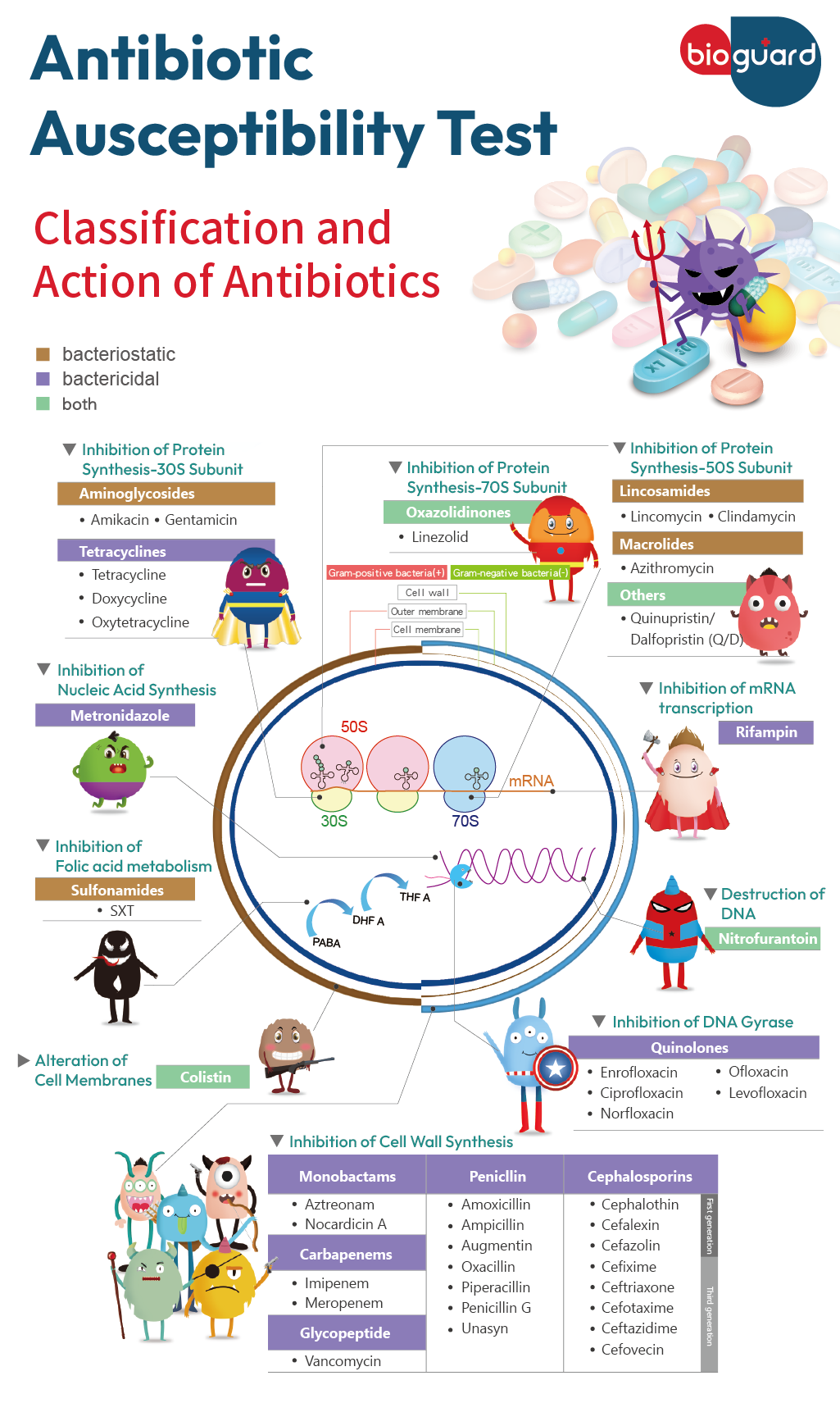Antibiotics are essential tools in modern medicine, used to combat bacterial infections that could otherwise lead to severe health issues or even death. To use these powerful drugs effectively, it’s crucial to understand the different classifications of antibiotics, which are based on their chemical structure, mechanism of action, and spectrum of activity. This article explores the main classifications of antibiotics, providing an overview of their uses and how they work.
-
Beta-Lactam Antibiotics
Examples: Penicillins, Cephalosporins, Carbapenems, Monobactams
Mechanism of Action: Beta-lactam antibiotics work by inhibiting the synthesis of bacterial cell walls. They target the penicillin-binding proteins (PBPs) that are crucial for forming peptidoglycan, a key component of the bacterial cell wall. By disrupting this process, beta-lactams weaken the bacterial cell wall, leading to cell lysis and death.
Uses: These antibiotics are widely used to treat a variety of infections, including respiratory tract infections, urinary tract infections, skin infections, and more. Penicillins are often the first line of defense against many common bacterial infections.
-
Macrolides
Examples: Erythromycin, Azithromycin, Clarithromycin
Mechanism of Action: Macrolides inhibit bacterial protein synthesis by binding to the 50S ribosomal subunit, preventing the translocation of peptides. This action effectively stops the bacteria from growing and multiplying.
Uses: Macrolides are particularly useful for treating respiratory infections, such as pneumonia and bronchitis, as well as skin infections. They are also an alternative for patients allergic to penicillin.
-
Tetracyclines
Examples: Tetracycline, Doxycycline, Minocycline
Mechanism of Action: Tetracyclines inhibit bacterial protein synthesis by binding to the 30S ribosomal subunit. This prevents the attachment of aminoacyl-tRNA to the mRNA-ribosome complex, thereby halting protein synthesis and bacterial growth.
Uses: Tetracyclines are used to treat a variety of infections, including skin infections, respiratory tract infections, and urinary tract infections.
-
Aminoglycosides
Examples: Gentamicin, Amikacin, Tobramycin
Mechanism of Action: Aminoglycosides bind to the 30S subunit of bacterial ribosomes, leading to the misreading of mRNA. This causes the bacteria to produce faulty proteins, ultimately leading to cell death.
Uses: These antibiotics are often used to treat serious infections caused by Gram-negative bacteria, such as sepsis, endocarditis, and complicated urinary tract infections. Due to their potential for toxicity, they are usually reserved for severe infections.
-
Fluoroquinolones
Examples: Ciprofloxacin, Levofloxacin.
Mechanism of Action: Fluoroquinolones inhibit bacterial DNA gyrase and topoisomerase IV, enzymes critical for DNA replication and transcription. By disrupting these processes, fluoroquinolones prevent bacterial cell division and lead to cell death.
Uses: Fluoroquinolones are used to treat a variety of infections, including respiratory tract infections, urinary tract infections, gastrointestinal infections, and skin infections.
-
Sulfonamides
Examples: Sulfamethoxazole, Sulfadiazine
Mechanism of Action: Sulfonamides inhibit dihydropteroate synthase, an enzyme involved in folate synthesis in bacteria. Folate is necessary for DNA synthesis and cell division, so its inhibition leads to bacterial growth arrest.
Uses: Sulfonamides are commonly used in combination with trimethoprim (e.g., as co-trimoxazole) to treat urinary tract infections, respiratory infections, and some types of diarrheas.
-
Glycopeptides
Examples: Vancomycin
Mechanism of Action: Glycopeptides inhibit bacterial cell wall synthesis by binding to the D-alanyl-D-alanine termini of cell wall precursor units. This prevents the cross-linking of peptidoglycan chains, which is essential for bacterial cell wall strength and rigidity.
Uses: Glycopeptides are used primarily to treat serious Gram-positive infections, especially those caused by methicillin-resistant Staphylococcus aureus (MRSA) and other resistant organisms.
-
Oxazolidinones
Examples: Linezolid, Tedizolid
Mechanism of Action: Oxazolidinones inhibit protein synthesis by binding to the 50S subunit of the bacterial ribosome, preventing the formation of a functional initiation complex for protein translation.
Uses: Oxazolidinones are used to treat serious infections caused by Gram-positive bacteria, including MRSA and vancomycin-resistant enterococci (VRE).


